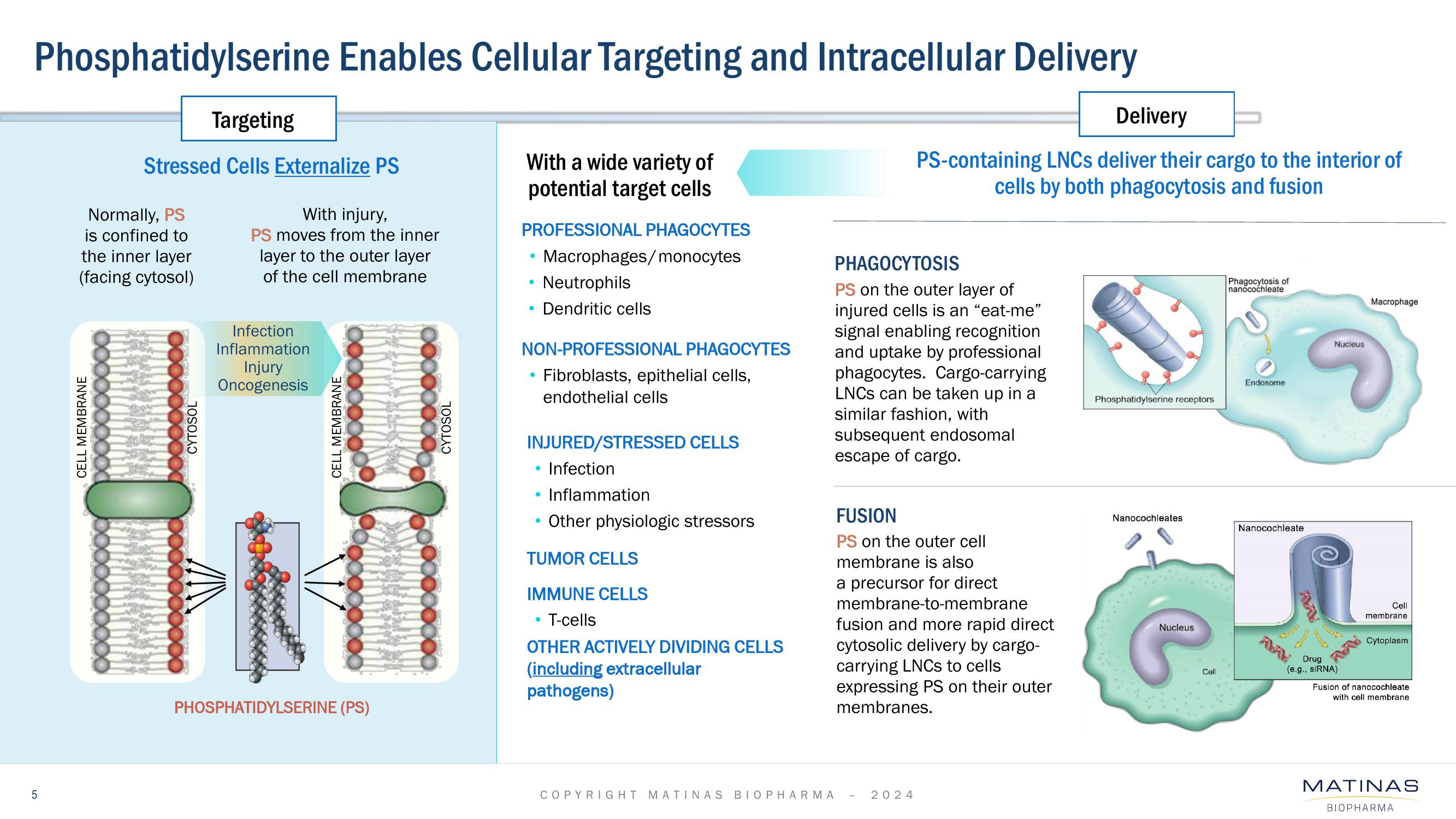Matinas BioPharma Investor Presentation Deck
Phosphatidylserine Enables Cellular Targeting and Intracellular Delivery
5
Targeting
Stressed Cells Externalize PS
Normally, PS
is confined to
the inner layer
(facing cytosol)
CELL MEMBRANE
CYTOSOL
With injury,
PS moves from the inner
layer to the outer layer
of the cell membrane
Infection
Inflammation
Injury
Oncogenesis
CELL MEMBRANE
PHOSPHATIDYLSERINE (PS)
CYTOSOL
With a wide variety of
potential target cells
PROFESSIONAL PHAGOCYTES
Macrophages/monocytes
Neutrophils
• Dendritic cells
NON-PROFESSIONAL PHAGOCYTES
Fibroblasts, epithelial cells,
endothelial cells
●
INJURED/STRESSED CELLS
Infection
Inflammation
Other physiologic stressors
TUMOR CELLS
IMMUNE CELLS
• T-cells
OTHER ACTIVELY DIVIDING CELLS
(including extracellular
pathogens)
PHAGOCYTOSIS
PS on the outer layer of
injured cells is an "eat-me"
signal enabling recognition
and uptake by professional
phagocytes. Cargo-carrying
LNCS can be taken up in a
similar fashion, with
subsequent endosomal
escape of cargo.
Delivery
PS-containing LNCS deliver their cargo to the interior of
cells by both phagocytosis and fusion
COPYRIGHT MATINAS BIOPHARMA
FUSION
PS on the outer cell
membrane is also
a precursor for direct
membrane-to-membrane
fusion and more rapid direct
cytosolic delivery by cargo-
carrying LNCS to cells
expressing PS on their outer
membranes.
2024
Phosphatidylserine receptors
Nanocochleates
Nucleus
Cell
Phagocytosis of
nanocochleate
Endosome
Nanocochleate
Nucleus
Drug
(e.g., siRNA)
Macrophage
Cell
membrane
Cytoplasm
Fusion of nanocochleate
with cell membrane.
MATINAS
BIOPHARMAView entire presentation